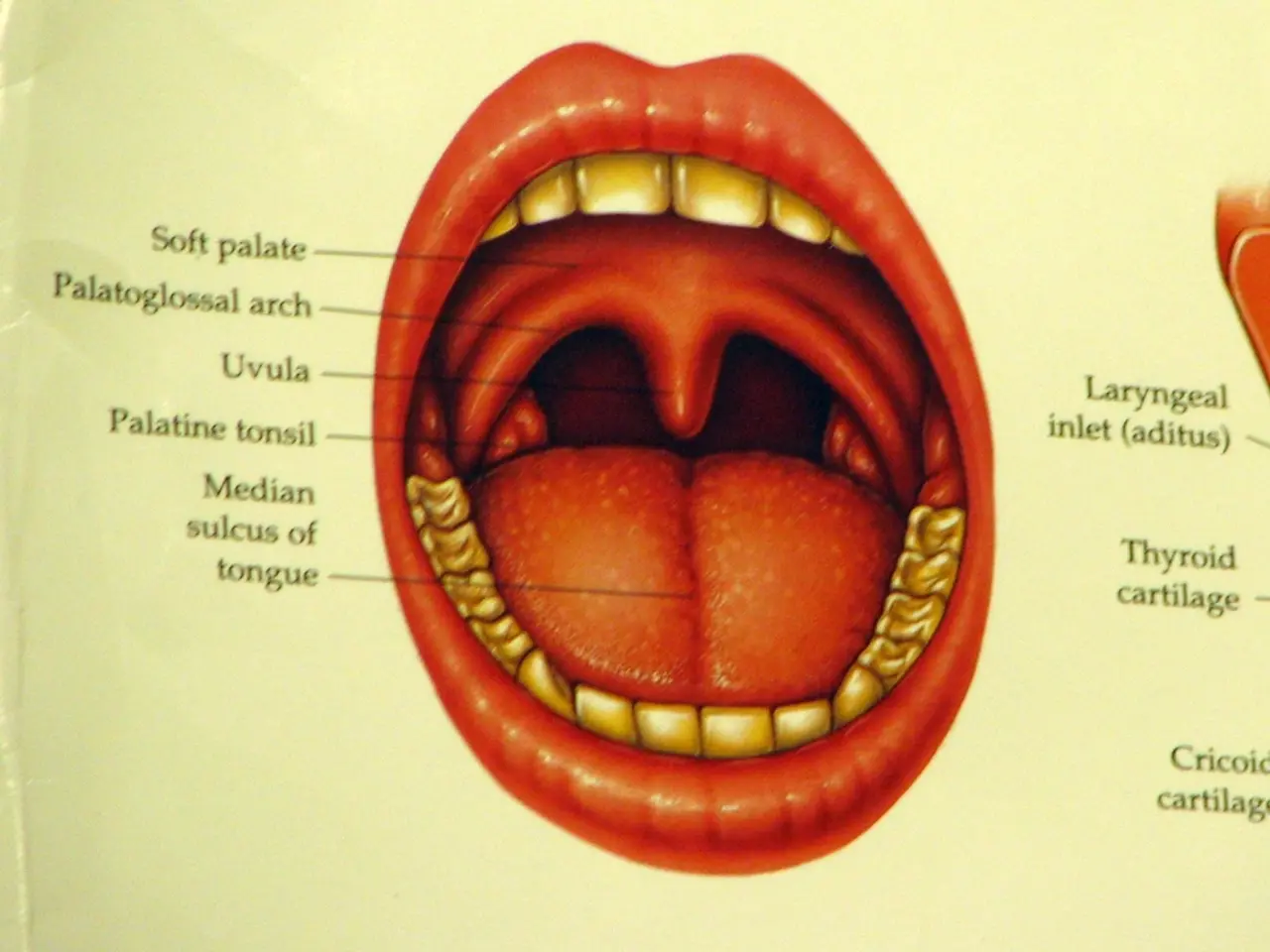Digestive System's Oral Cavity: Role and Biological Aspects
In the intricate process of digestion, the mouth plays a crucial role as the starting point. Here's a closer look at how the jaws, teeth, tongue, and other structures in the mouth contribute to mechanical and chemical digestion.
The jaws, consisting of the maxilla (upper jaw) and mandible (lower jaw), function primarily in mechanical digestion. The muscles of mastication, such as the masseter, temporalis, medial, and lateral pterygoid muscles, move the jaw to enable chewing (mastication). This physical breaking down of food into smaller pieces is essential for further digestion.
Teeth, with their sharp edges and grinding surfaces, mechanically digest food by cutting, tearing, and grinding it. This increases the surface area of the food, making it easier to swallow and chemically digest.
The tongue, a muscular organ, assists mechanical digestion by manipulating food within the mouth. It helps break food into smaller bits and mixes it thoroughly with saliva, which begins chemical digestion. Saliva contains enzymes that initiate the chemical breakdown of carbohydrates.
Together, these structures perform mastication – physically breaking down and mixing food with saliva, which contains digestive enzymes, notably amylase, starting the chemical breakdown of food molecules like carbohydrates right in the mouth.
The stomach, further down the gastrointestinal (GI) tract, continues the process of digestion using acid and enzymes. The GI tract, around 8-9 meters long, comprises hollow organs that connect, stretching from the mouth to the anus.
After swallowing, food travels through the esophagus and into the stomach. The mouth, however, remains involved in several digestive processes, including ingestion, mechanical digestion, chemical digestion, and nutrient absorption.
The tongue has various roles in digestion, including sucking food, moving food between the teeth, aiding with swallowing, encouraging the production of saliva, and even absorbing nutrients. The tongue's surface is covered in papillae, which have two different functions: mechanical papillae allow a person to feel food texture and form, and taste papillae contain taste buds, enabling a person to taste their food.
Salivary glands produce saliva, which contains substances that help with the chemical digestion of food. The small intestine forms a digestive juice to mix with bile and pancreatic juice to finalize the breakdown of fats, carbohydrates, and proteins.
The liver produces bile, a digestive juice that breaks down fats and certain vitamins. The gallbladder stores bile and secretes it into the small intestine when required. The pancreas makes digestive juice to break down carbohydrates, fats, and proteins.
A bolus, formed when food and saliva mix, is what a person swallows after chewing. The hard palate, the roof of the mouth, and the soft palate, behind it, leading into the throat, help prevent food from entering the nasal cavity.
Finally, the rectum stores stool until the body excretes it via the anus, marking the end of the digestive process. Chewing, or mastication, is the start of mechanical digestion in the mouth, where food is broken down into smaller pieces, setting the stage for efficient nutrient breakdown and absorption downstream.
The tongue's manipulation and mixing of food with saliva starts chemical digestion, particularly of carbohydrates, contributing significantly to overall digestive health. The enzymes in saliva, produced by salivary glands, play a crucial role in the digestion process, as part of the broader health-and-wellness benefits associated with proper food consumption and digestion.
The scientific understanding of foodandfoodbenefits, including digestive health, is deeply rooted in the biological recognition of the role of the mouth in initiating mechanical and chemical digestion, highlighting the digestive system's intricate workings and importance to our health.




